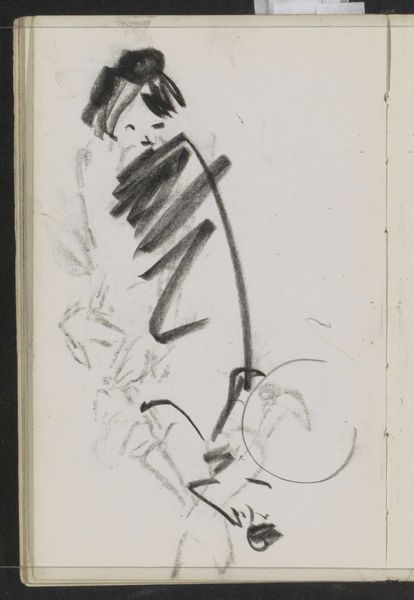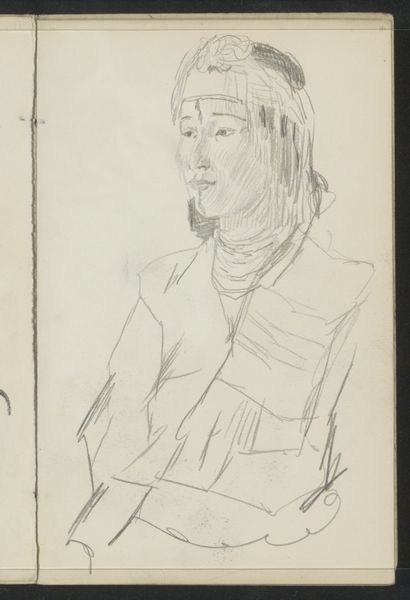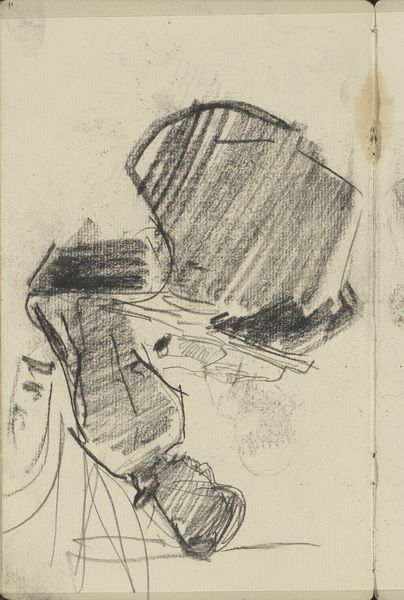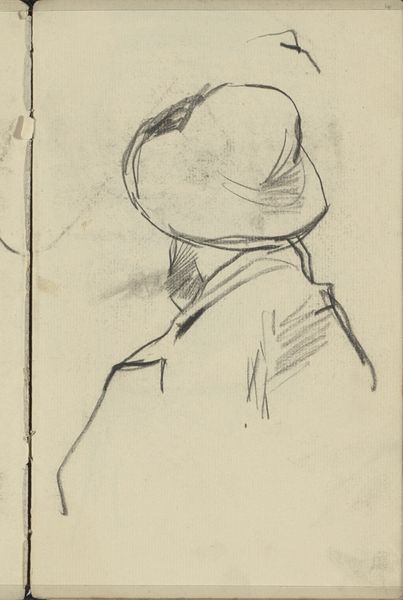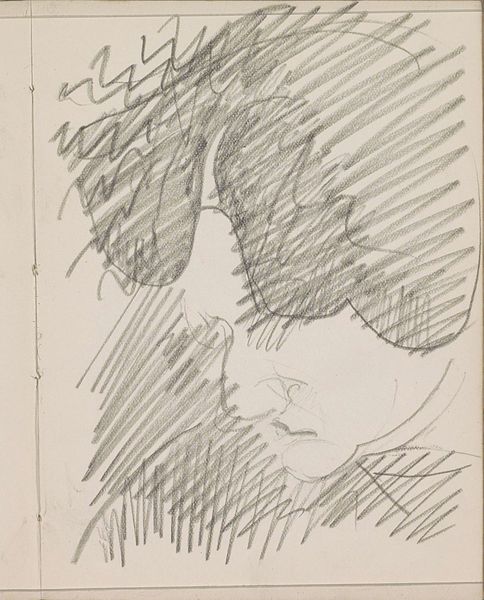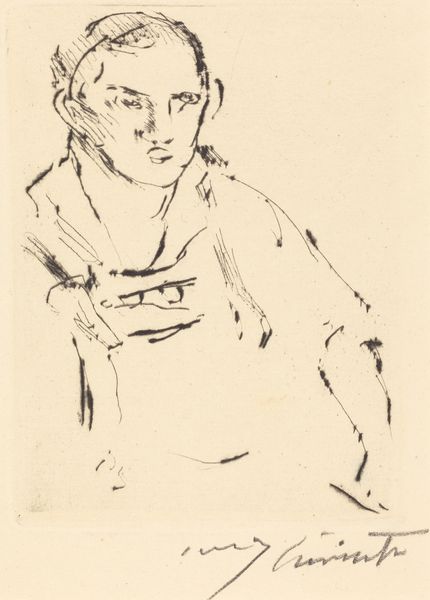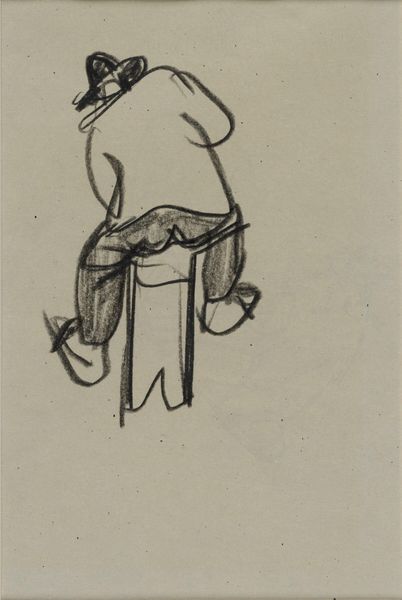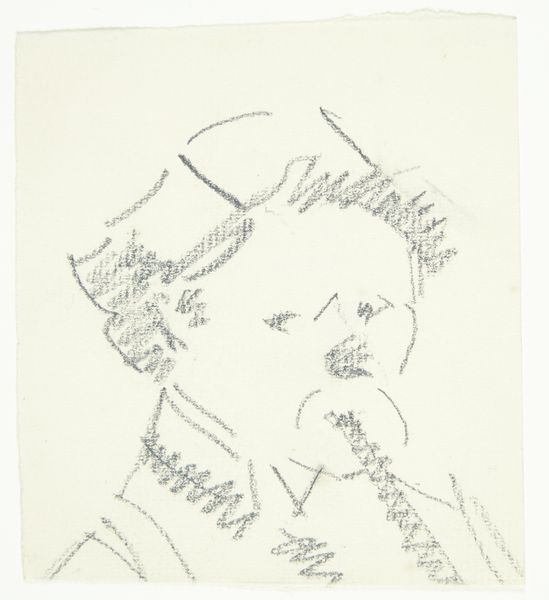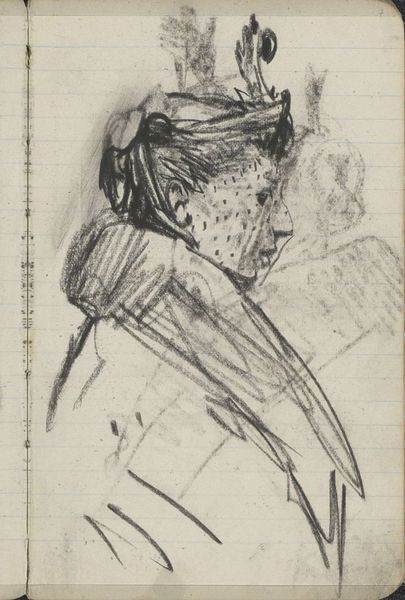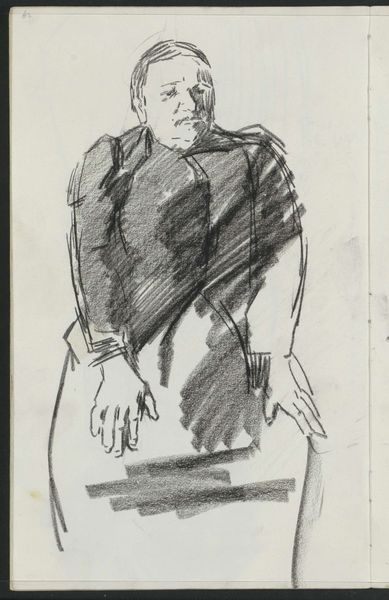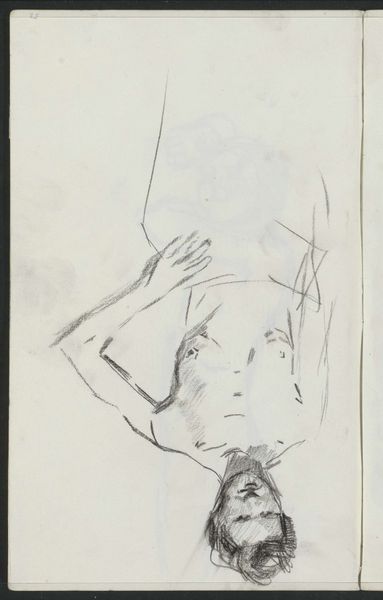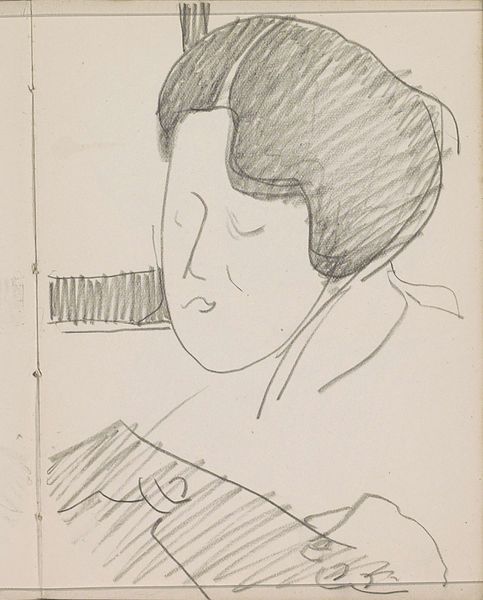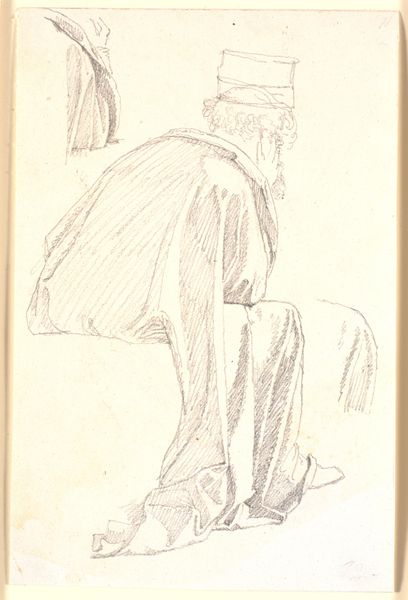
Copyright: Rijks Museum: Open Domain
Curator: Take a look at this delicate pencil and pen drawing from our collection here at the Rijksmuseum. It is titled "Vrouw met hoed, in profiel," or "Woman with Hat, in profile," by Isaac Israels, likely sketched sometime between 1886 and 1903. What are your initial impressions? Editor: There’s a lovely spontaneity to it. The limited shading lends it an airiness, almost as if she might float away. I am also drawn to how simply but carefully the structural elements such as hat or dress have been defined and placed within the available plane. Curator: Absolutely, Israels was capturing modern life in Amsterdam. You can almost feel the rapid strokes as he quickly tries to preserve the figure that attracts his eye. Think about the industrial expansion happening then, with many rural workers moving to big cities for jobs and creating new types of marketplaces for fashion. How would the material conditions for women shift as ready-made clothing replaced homemade outfits? Editor: Good point. On the purely formal level, notice how he's achieved depth and shadow using hatching, but the lines themselves remain distinct. Consider also the angle. We, as viewers, are placed subtly beneath her. But back to your point about the rapid strokes. Surely Israels was familiar with the quickness that was impressionism? Curator: Exactly. He was an active member of the Amsterdam Impressionist movement, inspired by French Impressionist masters, though he developed his distinct style portraying women working in fashion stores, at their daily activities, so it's fair to imagine what constraints are they going through when deciding to buy those "ready-made" outfits or when making hats. Also, did Israels depict this woman from imagination, or was it from real life observation? Editor: The visible, though muted, layering indeed indicates a conscious pursuit of immediacy. What about the bare paper, its emptiness functioning as a stark ground? I feel the way he captured her gives it that touch. Curator: Agreed. Perhaps the unfinished aspects emphasize the fast changes of modern consumerist life—nothing feels completely permanent or fixed. Israels allows us a glimpse of working-class lives intertwined with these shifts. Editor: Precisely. Israels allows the woman to be, but gives us an understanding on her own context. I agree that the material and social life she inhabits are key. I will definitely carry all those nuances next time I look at his work. Thank you.
Comments
No comments
Be the first to comment and join the conversation on the ultimate creative platform.
